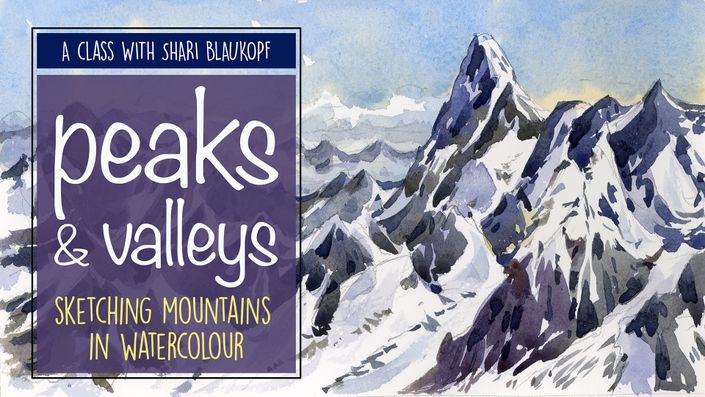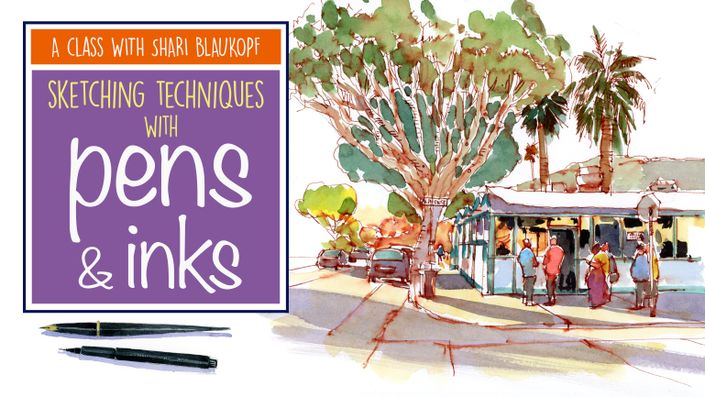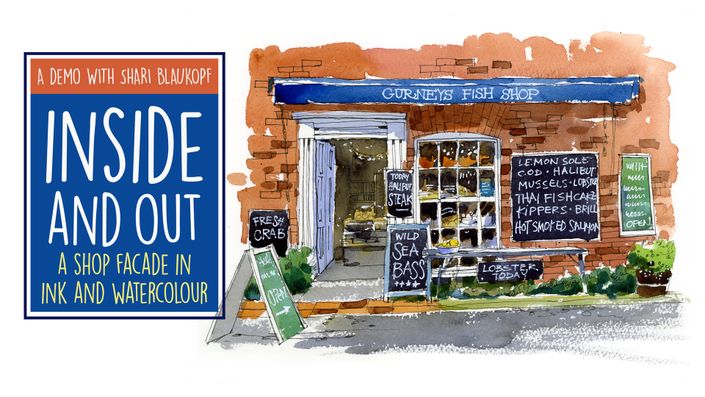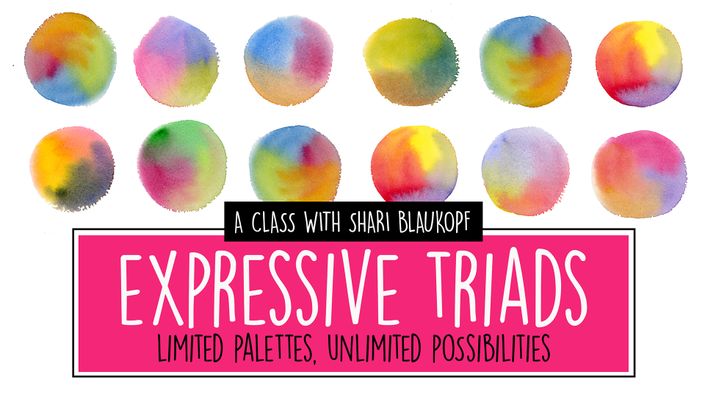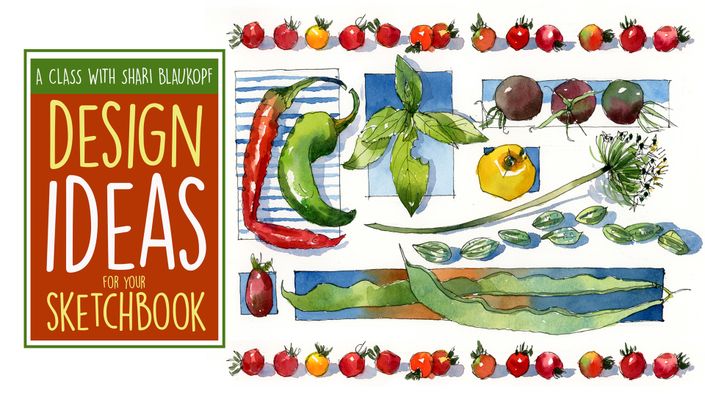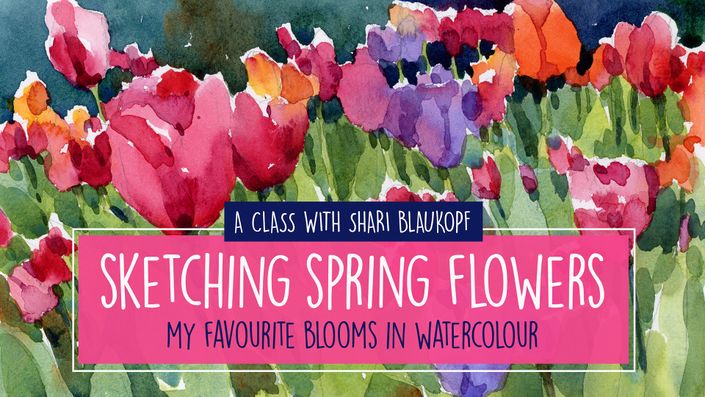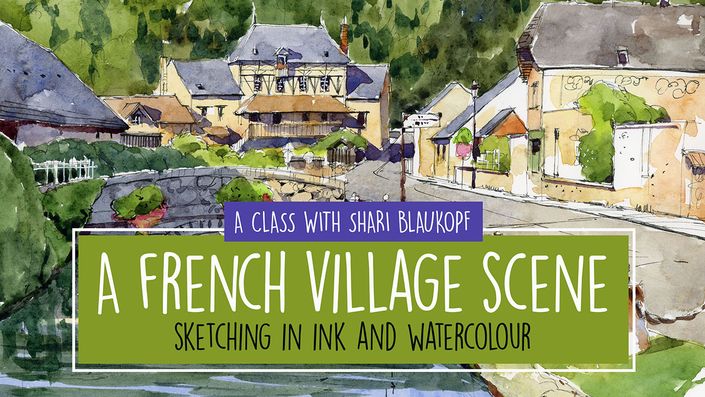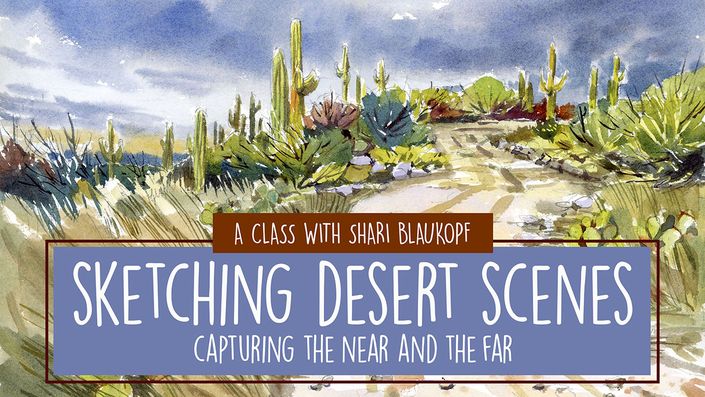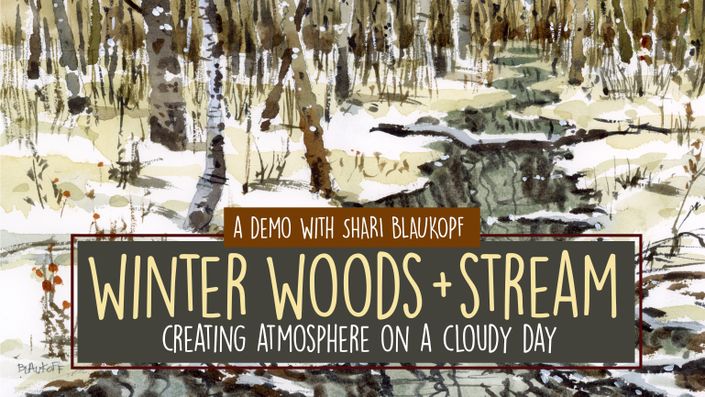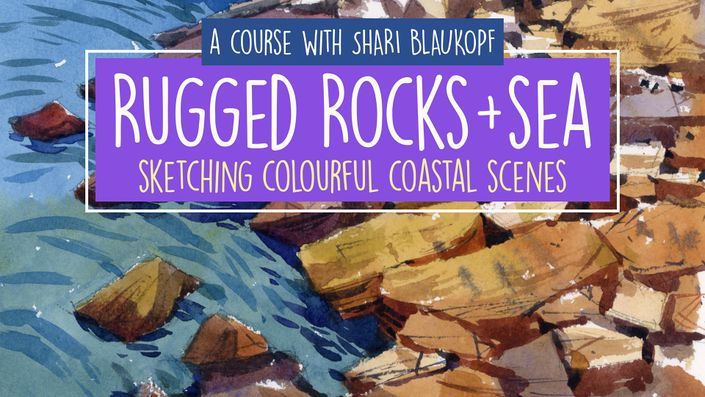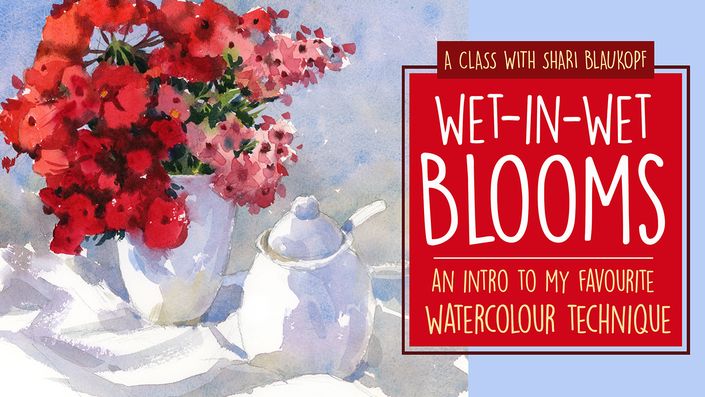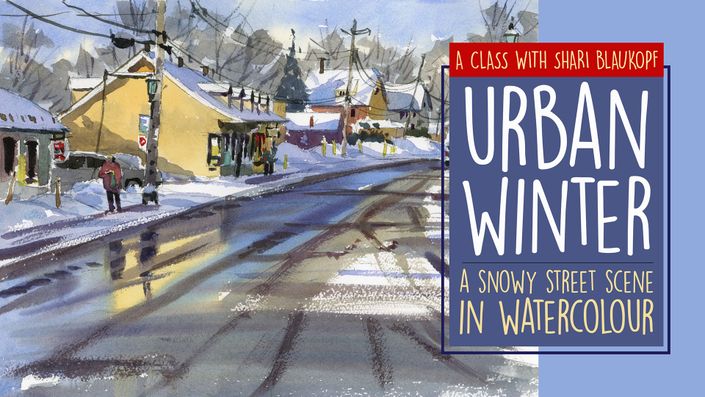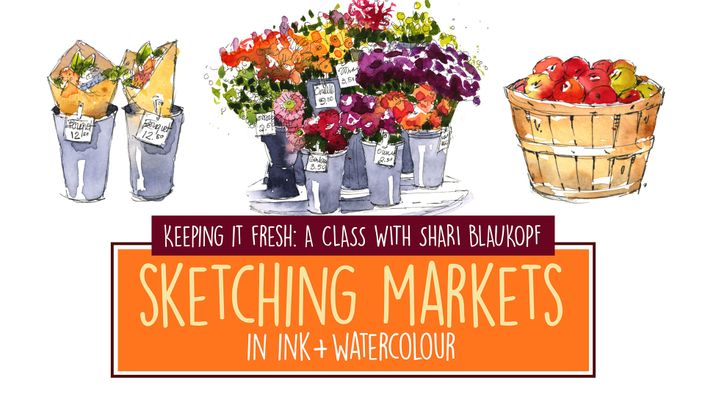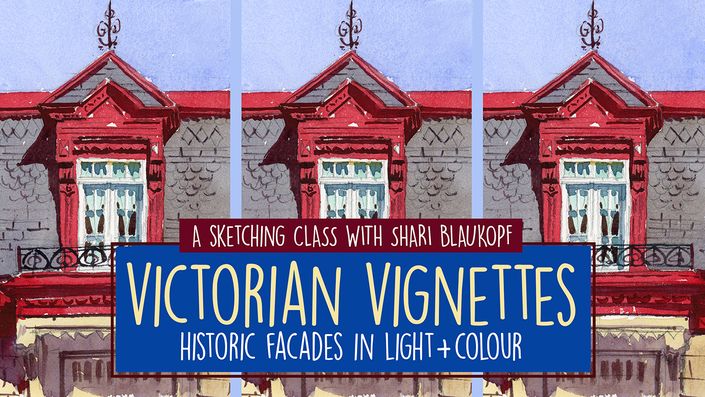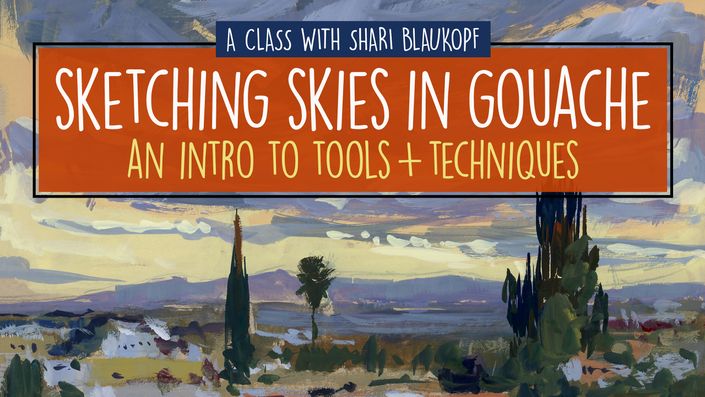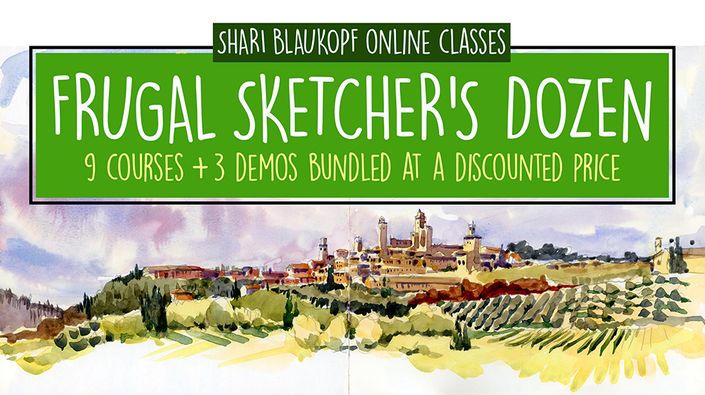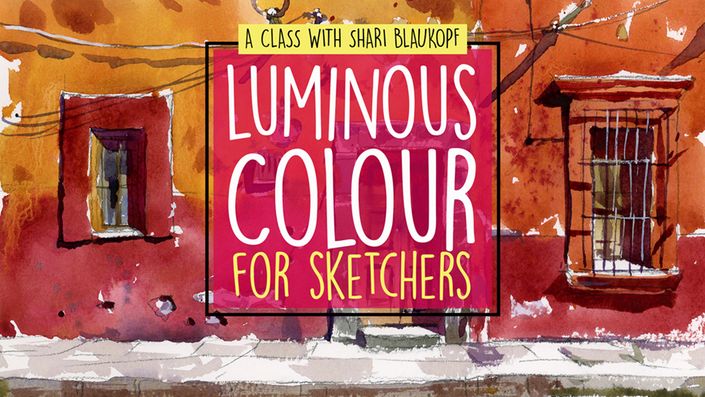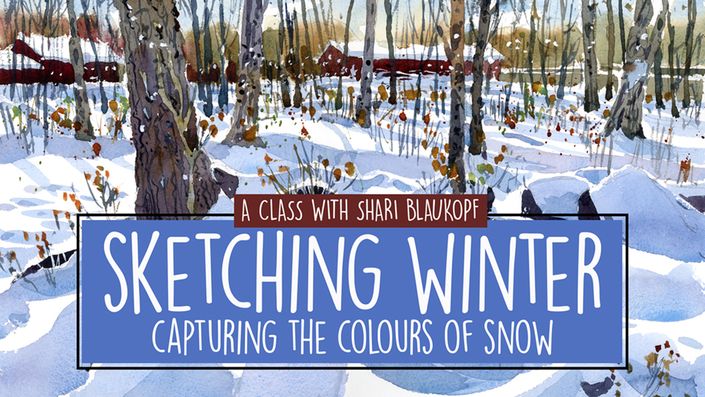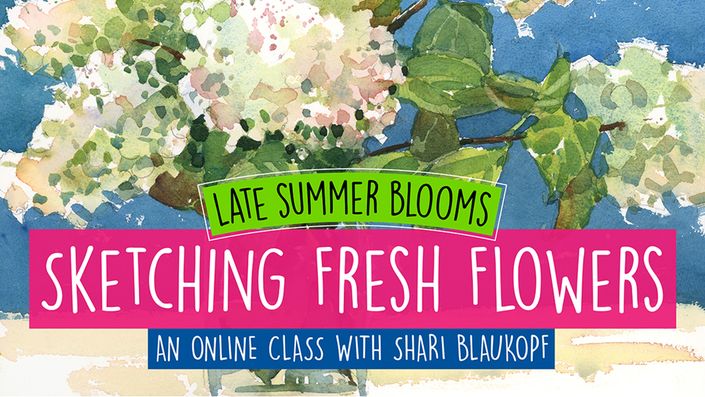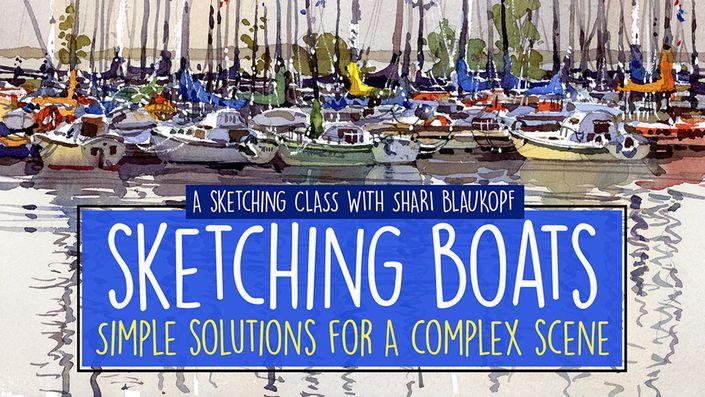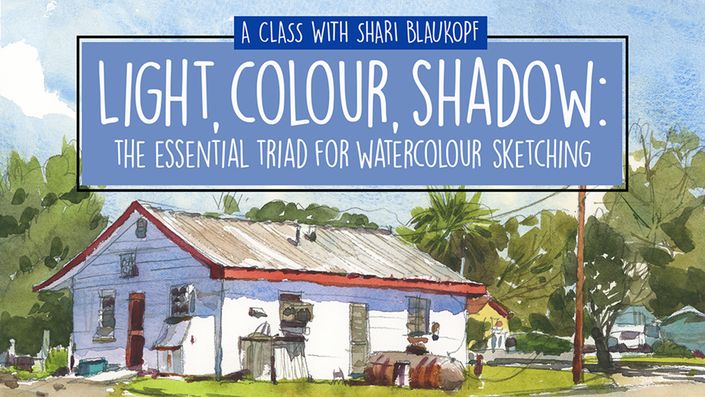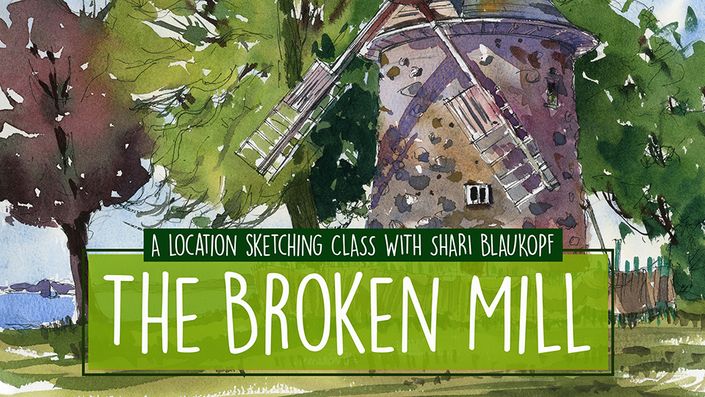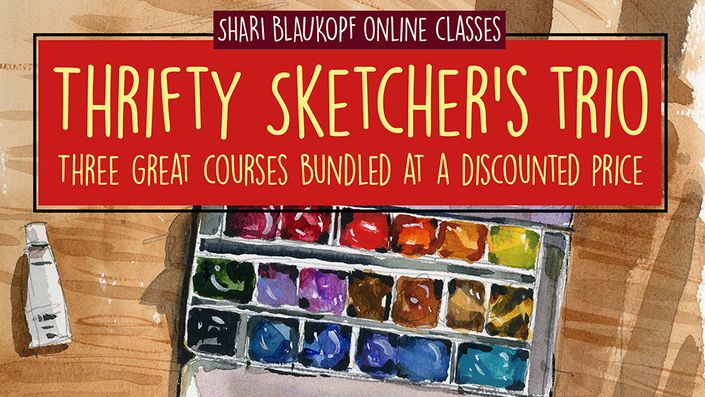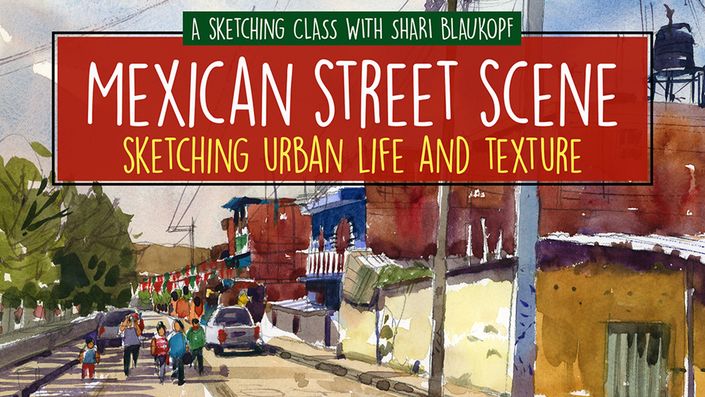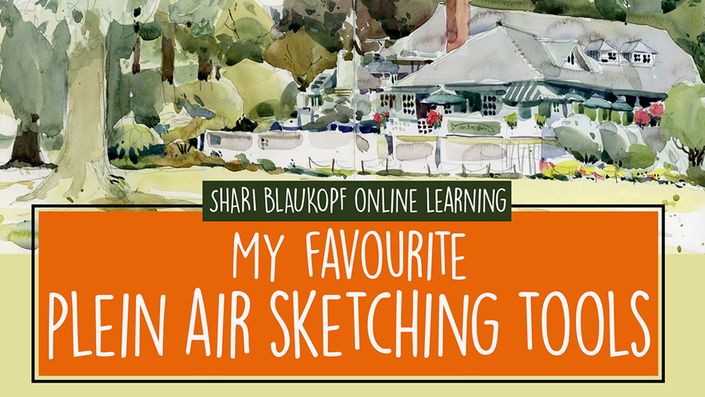
Sketching Trees in their Time and Place
A Shari Blaukopf online sketching and painting course
I was browsing through my sketchbooks one day, and discovered something interesting. In both my travel sketchbooks from around the world, and in my local Montreal sketchbooks, trees appear in just about every urban and not-so-urban sketch.
Trees convey so much about a location. They tell a story about the time of year. They provide scale, against which to measure people or buildings. Sometimes they’re a backdrop to what’s going on in the foreground. And often enough, they’re not just a backdrop. They’re the main subject.
Take "my favourite tree,” a sugar maple in my neighbourhood that I’ve painted dozens of times, in just about every season. There’s no question in my mind that each drawing, sketch or painting of this tree is a loving portrait. In fact, as I’ve discovered after years of sketching trees at home and abroad, each tree is unique and each has its own personality. And besides that, each tree is fun to draw and paint.

Why did I create this course?
To focus specifically on how to draw and paint different types of trees in various locales and times of year. So that once you’ve worked your way through the course, you can confidently sketch trees wherever you are — as friendly and familiar backdrops to your main subject, or as the main subject itself.

What will you learn in this course?
I hope to share with you my favourite and proven techniques for sketching trees in their time and place. Our subjects will include tall evergreens in a mountain setting; live oaks dripping with Spanish moss; and, of course, my favourite maple tree in both autumn and winter.
We’ll start each sketch with a loose but accurate drawing that’ll serve as a framework for the main tree shape. From there we’ll select brushes that best match the shapes we're looking to create within our specific tree. Then we’ll use the freshest colours to express the character of our tree and the time of year. Finally, we’ll complete our sketch with the details and darks that make our tree uniquely alive.
At the end of this course, I believe you’ll have the confidence and skills to paint a variety of trees in all seasons, both at home and when you travel.

If you love to sketch and want step-by-step techniques for capturing trees in all seasons, this course is for you. I’ll show you how to:
- Create a variety of expressive greens from the colours already on your own palette
- Choose the best brushes for creating a variety of marks, edges and textures appropriate for each tree
- Create depth within each tree by understanding its basic shape, and then using value and colour variations to create volume
- Preserve the whites of your paper when painting the branches of a tree in snowy winter weather
This course includes:
- Four full-length video demonstrations plus two practice exercises you can watch at your own pace, as many times as you like
- Closeup views of my brush and paper so you can see the relationship between the wetness of the brush and the dampness of the paper
- Downloadable reference images, so you can paint along
- A detailed list of materials
- A comments section where you can ask questions and post your finished sketches
Check out what you'll learn!
Three important topics we'll cover in this course:

Using the right brushes
If you can convey the basic shape of the crown of a tree with a few simple brushstrokes, then you’re well on your way to sketching trees in watercolour. I’ll share my favourite brush shapes for painting a wide variety of trees.

Selecting the best colours
The richest greens on my palette come from the way I mix yellows and blues. We’ll explore how to create a wide range of colours for trees in all seasons, from the deepest darks of tall evergreens to the softest greys of winter trees.

Saving the whites
I’ll show you how a little advance planning can help you save those all-important whites of your paper when painting trees in winter.
Course Curriculum
FAQ
How long is this course?
It’s over 4 hours in duration, and includes FOUR full-length demos and two practice exercises so you can strengthen your skills.
How long will I have access to this course?
Once you sign up, the course is yours to watch as often as you like.
Who is this course for?
This is an intermediate level course. You should have some basic experience with drawing and watercolour.
What tools will I need?
We’ll cover drawing and painting tools in some detail at the start of the course, and you can download a list of materials.
Will I have access to all the lessons at once?
Yes, once you register you’ll have access to all the lessons so you can start learning, drawing and painting immediately.
How do I find the courses I am enrolled in?
Go to the top of the page and look for the "My Courses" tab. All the courses you have registered for are right there.
